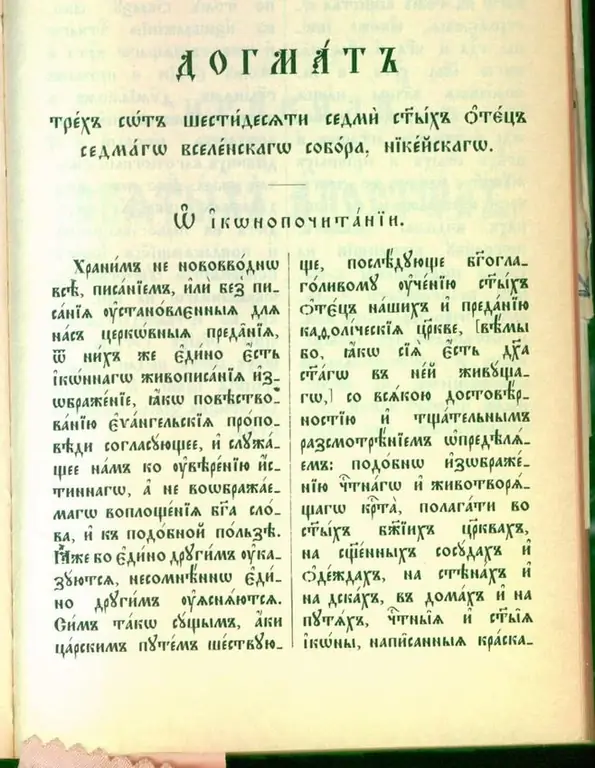- Author Antonio Harrison [email protected].
- Public 2024-01-09 15:32.
- Last modified 2025-01-22 21:44.
The Orthodox Christian faith is based on the basic formulations of the doctrine, which are accepted by the fullness of the Church. The main essence of doctrinal truth in modern times is called a dogma and has general church significance and a direct connection with the life and faith of a person.

Modern textbooks of dogmatic theology indicate that the word "dogma" has Greek roots and is translated as "consider", "believe", "think". In addition, the perfect Latin verb "dedogme" has the meaning in Russian "defined", "put", "established", "decided".
The term dogma has a pre-Christian history. It was used by the philosophers of the ancient period. So, Plato in his works called this term human concepts and ideas about the beautiful and just. In the works of Seneca, basic moral norms are called dogmas. In addition, philosophical truths that do not require proof, as well as state decrees and decrees, were called dogmas.
In the Holy Scriptures of the New Testament, the word "dogma" is used in two meanings:
- The Gospel of Luke tells about the decree of the ruler Augustus about the population census. The decree of Caesar is called dogma. The book of the Acts of the Holy Apostles calls the apostolic decrees of the Jerusalem Council "ta dogmata".
- The Apostle Paul uses this term to refer to the Christian doctrine in its entirety.
Thus, for the Christian Church of the 2nd - early 4th centuries, the entire Christian doctrine was called dogma, which includes not only the basic postulates of faith, but also moral principles. The era of Ecumenical Councils, which began in the 4th century, influenced the fact that only doctrinal truths began to be called dogmas. This was due to the formation of clear theological doctrinal formulations that were accepted by the Church from the moment of its foundation. It should be understood that the very essence of the doctrine is called a dogma, and the verbal formulation ("shell") is called a dogmatic formulation.
After the Seventh Ecumenical Council, the doctrinal truths that were approved at the Ecumenical Councils of bishops and clergy of the Christian Church began to be called dogmas. In essence, dogmas are a border, a limit beyond which the human mind cannot go in thinking about God. Dogmas protect a person's faith from false heretical creeds. So, for example, the dogma of two natures in Christ testifies to the faith of the Orthodox person in the fact that Christ is the true God (in the full sense of the word) and man (the second Person of the Holy Trinity became incarnate).
Christian Orthodox dogmas have certain properties expressed in terms of doctrine, revelation, churchliness and legal obligation (general obligation). Thus, a dogma is a doctrinal truth accepted by the fullness of the Orthodox Church.
Sometimes dogmas and basic doctrinal truths are difficult for the human mind to perceive. For example, it is impossible for people to comprehend with the mind in full measure the concept of the oneness and Trinity of the Divine. Therefore, dogmas are called by some theologians a cross for the human mind.
An Orthodox person must understand that dogmas also have a practical purpose and contribute not only to correct thinking about God, but also to unity with Him and striving for the Creator. Thus, the church historian A. V. Kartashev in his work "The Epoch of Ecumenical Councils" writes:

Another remarkable theologian V. N. Lossky speaks directly about the purpose and importance of dogmas:






